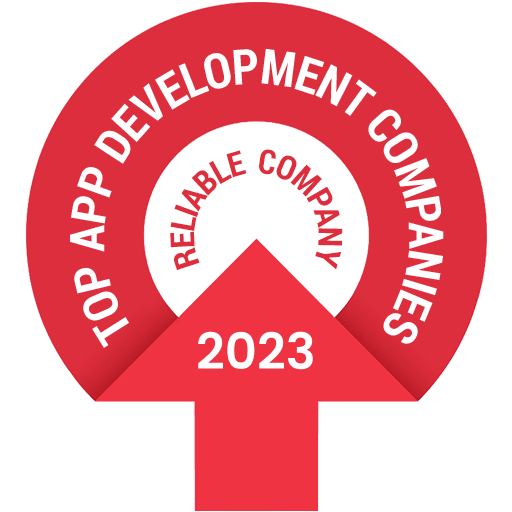
The Evolution of Compliance Automation: From Reactive to Proactive Approaches
- By Laura Hall
- 21-10-2024
- Software
Over time, compliance automation has grown into a more sophisticated, streamlined, and efficient platform. Creating a proactive compliance culture requires dedication at all levels of an organization. This culture transformation entails creating a feeling of compliance responsibility in all employees, from executives to front-line staff. Clear communication of expectations, comprehensive training programs, and visible leadership support are all critical components of developing this culture.
Employees should grasp the significance of compliance and how their activities affect the organization's overall compliance posture. Encouraging an open communication culture allows for reporting possible compliance concerns without fear of reprisal.
What Is Compliance Automation?
Compliance automation refers to using technology, such as AI, to verify systems for compliance continuously. Compliance automation solutions automate manual processes and monitor all compliance procedures simultaneously.
Why does compliance matter?
With severe regulatory regulations and rules playing a crucial role in today's corporate scene, complying may mean the difference between running a smooth, efficient firm and becoming the focus of a lawsuit.
HIPAA, FERPA, and GDPR are a few examples of compliance rules. Automation facilitates action planning and policy execution.
A reactive compliance approach involves an organization responding to concerns as they occur as problems. However, a proactive strategy is preferable, in which an organization implements the technologies ahead of time to prevent compliance issues.
What's the difference between proactive and reactive compliance?
Proactive compliance ultimately results in cost and time savings. A reactive approach to compliance necessitates allocating considerable resources after a breach, such as investigations, audits, and legal expenses, not to mention the possible penalties a firm may face.
What is an example of reactive compliance?
Reactive compliance explains how businesses react to a compliance violation. For example, authorities identify inaccuracies in submitted legal entity management data that contravene compliance rules.
In response, the breaching firm must dedicate days, weeks, or even months to resolving the issue. Legal and compliance teams must perform extensive audits, surveillance, and investigations to discover the root cause of the compliance violation. These are high-cost, time-consuming processes that impede and stifle your company's development.
What is an example of proactive compliance?
The phrase "proactive compliance" refers to steps performed by a firm prior to a prospective act of noncompliance. Unlike reactive compliance, proactive compliance tackles potential risks before they occur by establishing a compliance culture across the organization.
A rigorous corporate compliance program indicates a proactive commitment to corporate compliance standards. It defines the norms and processes that all workers must follow in order to ensure business compliance.
These programs are particularly beneficial to big organizations with several entities and subsidiaries stationed in various worldwide regions. Leaders of each organization or subsidiary may refer to the master compliance standards to verify that each business division complies with regulatory laws and regulations.
Business benefits of proactive vs. reactive compliance
Sometimes regulations are passed that require most firms to follow more strict compliance standards. The Corporate Transparency Act and new regulations for beneficial ownership information (BOI) are two recent examples. Qualifying entities operating in the United States must file BOI reports with the Treasury Department's FinCEN branch or face fines for noncompliance.
Proactive compliance collects and organizes all legal entity data.
Having a proactive compliance policy in place helps organizations be ready for significant regulatory developments like these. A Chief Compliance Officer is responsible for monitoring, auditing, and enforcing compliance rules. These standards include the entry and reporting of all legal entity management data, as well as information on beneficial owners and shareholders.
Quick access to all legal entity data saves crucial time
When filing deadlines approach, businesses might be in one of two situations: racing to collect all reporting data or completely prepared to submit compliance data.
By taking a proactive approach to corporate compliance, your legal and compliance staff may avoid a frantic rush as filing deadlines approach. They'll save crucial working time by gathering all of the essential filing information ahead of time. All that is necessary is to organize the data into reports that can be filed and submitted to the right authorities.
Eliminate the financial costs of reactive compliance
The most significant advantage of proactive compliance is that it avoids the expenses of reactive compliance.
If you wait until after a breach of compliance occurs, you will have to go through the legal procedure of fixing the violation. That procedure is very expensive since last-minute legal bills, filing fees, and any penalties imposed on your company may deplete your operating budget.
Taking a proactive approach to corporate compliance should reduce the likelihood of a breach. As a result, you will only need to set aside a small amount of your budget to meet the legal implications of noncompliance.
5 Reasons To Automate Compliance
Automating compliance activities in your organization has several advantages, including increased operational efficiency, lower risks, and better overall compliance management. Here are some significant reasons or problems for automating compliance operations in your organization:
1. Complex and Time-Consuming Processes
Data gathering, analysis, reporting, and monitoring are all time-consuming and complex processes when investigating compliance requirements. Manually carrying out these operations requires important time and resources, increasing the possibility of errors and oversight.
Automation simplifies these complicated procedures, allowing for the smooth gathering, processing, and reporting of compliance data. By automating regular procedures, organizations may decrease the heavy time and effort spent for compliance efforts, freeing up teams to concentrate on strategic objectives and core business operations.
2. Increased Error Risks and Non-Compliance
Manual compliance methods are susceptible to human mistakes, resulting in inaccuracies, inconsistencies, and possible compliance breaches. With automated checks and controls, organizations can avoid missing important compliance obligations, resulting in regulatory fines and brand harm.
Automation reduces the risk of mistakes and noncompliance by enforcing standardized procedures, confirming data correctness, and deploying automatic warnings and notifications for possible problems.
3. Monitoring and alert systems need to be improved.
Traditional compliance monitoring solutions often need more real-time capabilities, making it difficult for organizations to notice and address compliance concerns in a timely manner. Manual monitoring systems may depend on periodic reviews and manual inspections, which might delay the discovery of compliance issues and possible hazards.
Automation includes real-time monitoring and alarm systems that continually track compliance parameters and analyze data patterns. These systems also send out notifications when there are abnormalities or departures from the predefined standards. As a result, organizations may proactively detect and handle compliance concerns as they develop.
4. Lack of Adequate Analysis, Reporting, and Accountability
Manual reporting systems may need to provide more consistent compliance paperwork, making it difficult for organizations to show compliance to regulators, auditors, and stakeholders. Inadequate analytical and reporting skills impede organizations' ability to spot compliance trends, monitor performance indicators, and evaluate compliance activities.
Automation makes it easier to create complete reports and audit trails that capture precise information on compliance activities, results, and deviations. As a result, organizations may provide fast and accurate compliance reports, giving stakeholders important insights into compliance performance and risk exposure.
5. A Response-Based Strategy for Ensuring Safety and Scalability
Without proactive risk management strategies and scalable compliance procedures, organizations may find it difficult to respond to changing regulatory requirements and business demands. Manual risk management systems often depend on reactive measures, such as periodic assessments and manual interventions, which may not be enough to address developing hazards in real-time.
Automation helps organizations take a proactive approach to risk management by using data analytics, predictive modeling, and automated controls to discover, analyze, and reduce compliance issues ahead of time. Furthermore, automatic scaling capabilities enable businesses to smoothly extend their compliance programs as their operations develop and adapt.
Thus, automating your organization's compliance operations is a strategic investment. It provides various benefits, including increased efficiency, lower risks, real-time monitoring capabilities, proactive risk management, regulatory alignment, and a competitive edge. It allows your organization to manage complicated regulatory environments better while focussing on generating company development and innovation.
Key to an Effective Compliance Program
An effective compliance program consists of the following elements:
Testing: The system must be reviewed before any automated procedures are implemented.
Policies and processes: The policies and procedures utilized to carry them out must be clear and straightforward to grasp.
Software and Tools: Compliance automation software handles manual chores for the user.
Continuous review: It is critical to examine compliance procedures frequently to identify methods to enhance your operations.
How Does Automated Compliance Work?
Automated compliance solutions categorize and safeguard particular types of data and systems. The relevant regulations determine the categorization. For example, HIPAA standards require the protection of specific types of patient data.
Compliance automation also includes collecting, controlling, and analyzing data at different stages of its lifetime and issuing any appropriate warnings when the analysis shows a potential compliance breach. For example, data stored in a spreadsheet may be compared to historical averages. When the automated program detects a relative surge or dip in the numbers, it may compile and send a report to the relevant stakeholders.
Benefits Of Compliance Process Automation
Automated compliance is especially advantageous for organizations that deal with sensitive data since it provides various advantages in terms of security, cost savings, and reporting.
Reduced compliance risks
Compliance automation minimizes the likelihood of an organization facing penalties for noncompliance. Human mistakes and wasted effort are avoided because answers to possible concerns are automated.
Automating compliance enables you to continuously check your system for vulnerabilities, allowing you to detect many more problems than if you did manually, reducing risk. This might save a corporation a lot of money. If an organization fails to comply with HIPAA, the penalties may be up to $50,000.
It is more productive than manual operations.
Manual procedures are prone to human mistakes, which may result in hours or days of lost time and thousands of dollars in penalties. Even talented and experienced staff with good intentions may need to pay attention to an item on a spreadsheet, a line of code, or a compliance process or policy detail.
When compliance procedures are automated, the only function that humans may perform is to respond to correct alarms and update the system when requirements change.
Real-time data on a single dashboard
Compliance automation software combines all compliance information into a single dashboard. Instead of managing various programs or spreadsheets, you can see your organization's overall compliance. You benefit from better risk management because the data is real-time.
Start to fall out of compliance in one area or another. Real-time notifications may help you solve the issue immediately, rather than waiting days, weeks, or months—or until you are caught off guard during an audit.
How Does Compliance Software Help with Compliance Risk Management?
Compliance Automation Software is a robust platform that offers organizations a complete set of risk management solutions. It provides characteristics like:
- Workflow Automation: A great compliance automation software enables organizations to automate compliance workflows, including risk assessments, policy changes, and incident management.
- Centralized Data Repository: The platform allows organizations to store compliance-related data in a single location, making it more straightforward to monitor and manage activities, documentation, and audit trails.
- Reporting and Analytics: Businesses can access extensive reporting and analytics capabilities, enabling organizations to create real-time information on compliance activities, audit results, and risk assessments.
- Task Management: The platform assists with assigning, monitoring, and managing compliance-related activities, ensuring that responsibilities are clearly defined and progress is tracked.
- Integration: You can integrate the software with other systems and solutions for smooth data exchange and cooperation across risk management departments.
- Notifications and Alerts: The platform may provide automatic notifications and alerts to key stakeholders, allowing prompt reactions to compliance concerns and possible hazards.
Conclusion
Organizations must take a more active approach to compliance risk management in today's severe regulatory environment. Proactive actions not only reduce risk, but they also improve efficiency and reputation. Developing a compliance-oriented culture and implementing proactive methods are critical for long-term success.
Recent blog

The Psychology Behind Rebranding (Expert Guide 2025)
Trends | 16-09-2025
The Role of Mobile Apps in Modern School Management Systems
Mobile Apps | 15-09-2025.jpg)




